How Fast Do Lilacs Grow & How To Make Them Grow Faster?
Lilacs have a moderate growth rate. However, the shrub variety i.e. lilac bushes grow quicker than lilac trees to reach maturity faster.
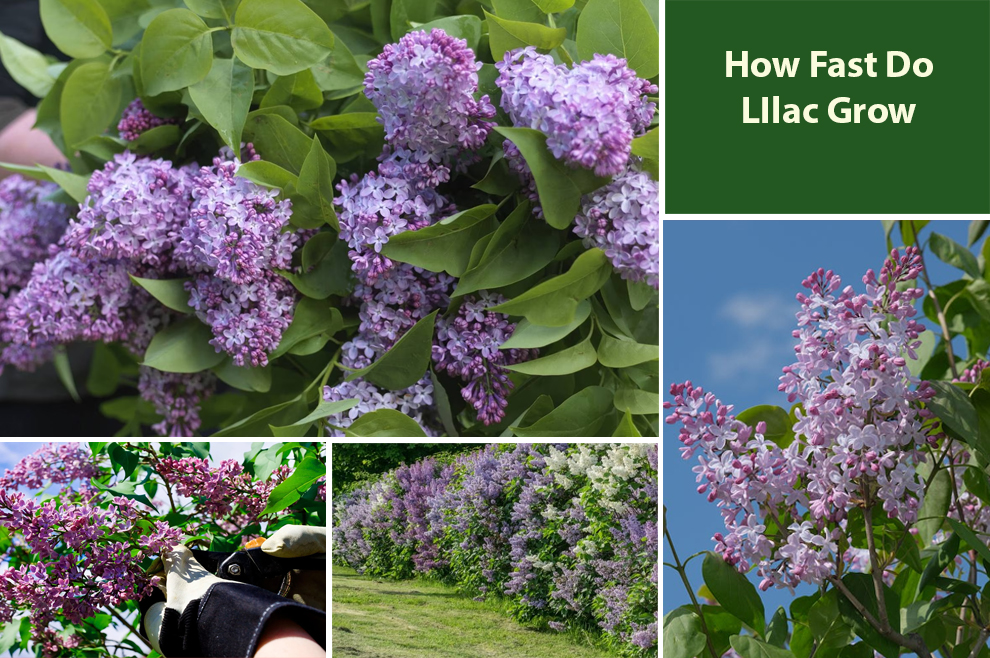
In the enchanting world of horticulture, wherein flowers blossom with plants weaving tales of natural beauty, one tree that stands out with its grace and elegance is the lilac.
Also called nature’s artist, lilacs captivate us with their intoxicating fragrance and vibrant colors. But as we embark on this journey to understand how fast do lilac grow, one fascinating truth came to our notice –
‘Lilacs have a captivating rhythm that is neither sluggish nor swift. They have a medium growth rate, seemingly savoring every moment to unveil their splendor. ‘
With proper care and maintenance, lilacs unfurl their delicate leaves and reach for the sky at a pace that screams patient artistry. You will see them growing 6 to 12 inches every year, a testament to their unhurried elegance.
This moderate growth rate of lilacs allows them to strike a harmonious balance, neither disappearing nor overpowering amidst the garden’s green tapestry.
So when other plants languish in sluggishness or rush to maturity, lilacs embody a steady but reliable tempo, reminding us that life’s grandest creations are crafted with poise and patience.
So let me take you through a botanical exploration to learn more about lilacs growing pace and if there is any way to grow them faster.
Are Lilacs Fast Or Slow Growers?
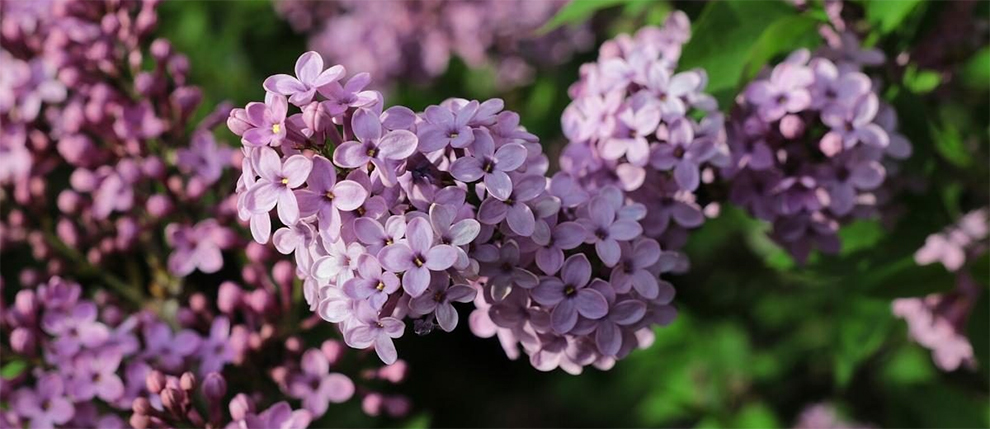
Lilacs are neither fast nor slow growers. Instead, they are moderate growers, embracing a steady growth rate, taking their time to flourish and unveil their mesmerizing beauty.
Every year lilacs add around six to twelve inches to their height, establishing a solid foundation for future development. Though their growth is not as rapid in the early stages, they compensate with their resilience and the anticipation of blossoming.
Patience is pivotal as these young saplings metamorphose into magnificent shrubs, enchanting the senses with their delightful fragrance and delicate booms. In the gardening world, the lilacs’ measured growth reminds us that nature’s most exquisite creations are crafted over time with poise.
How Much Does Lilac Grow In The First Year?
Lilacs experience modest growth in their first year, growing around 6 to 12 inches. This initial growth spurt sets the foundation for future development as the plant establishes a root system and acclimatizes to the environment.
Though lilacs do not depict a rapid growth rate in the early stages, they make up for it with their resilience and the promise of future blooms.
Patience is always rewarded with lilacs as the young saplings gradually metamorphose into majestic specimens, intoxicating the senses with their delightful fragrance and delicate flowers.
Is Lilac Growth Rate Constant In The Future or Does It Change With Different Stages?
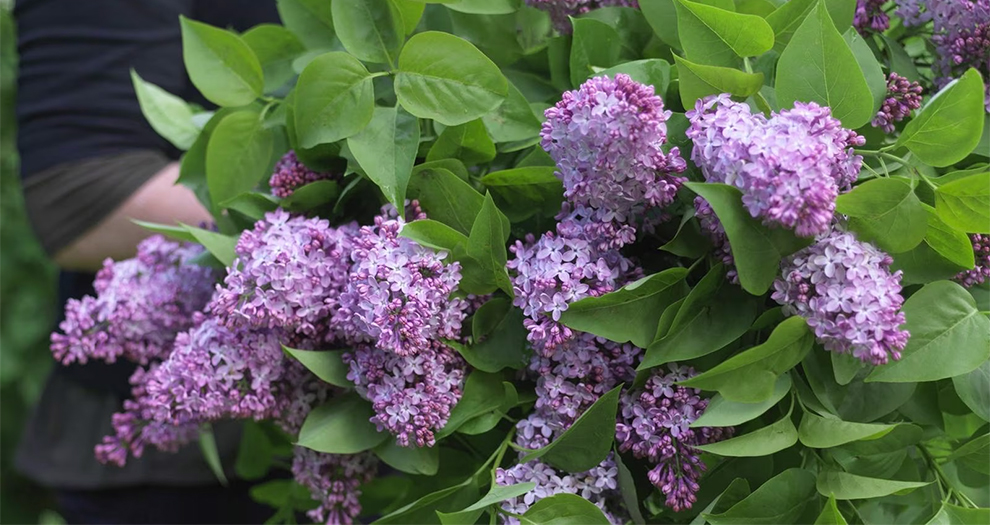
In the early years, the trees have a moderate growth rate. But the growth rate changes as the plant matures. While the growth rate is relatively more vigorous in the early stages, it slows down gradually as the plant matures.
In the beginning years, lilacs dedicate their resources to establishing a robust foundation. This period of rapid growth enables them to develop the necessary structure to facilitate future growth.
However, as they mature focus shifts toward reproduction and flowering. Hence, their energy allocation also changes.
After lilacs attain maturity, their growth rate stabilizes and becomes more consistent. Though they continue to add some width and height each year, the growth rate somewhat declines compared to the initial years.
This change in growth rate is a natural progression as the shrub allocates more energy towards yielding flowers and maintaining overall health.
Multiple factors like proper lilac care, environmental conditions, and cultivator growth rate determine how faster your lilacs grow. Sunlight, water, regular pruning, and nutrient supply can all contribute to maintaining healthier growth and potentially accentuating the lilacs’ overall growth rate.
How Long Does It Take For A Lilac To Reach Full Height?
The time lilacs take to reach their full height may depend on multiple factors, such as the specific lilac cultivator, pruning practices, and growing conditions. On average, it may take 5 to 10 years for the lilac to mature and reach its full height.
Please note that lilacs are technically slow to moderate growth compared to other plants. But their steady and slow growth is part of their charm, as they take their time to develop into robust and magnificent specimens.
The wait is rewarded as the lilac gradually attains its full height, becoming a stunning addition to any garden or landscape.
Is There A Difference Between A Lilac Tree and A Lilac Bush?
Even though both lilac bushes and trees belong to the same genus Syringa, you will see some distinctions in size and growth habits.
A. How fast do lilac bushes grow (shrubs)?
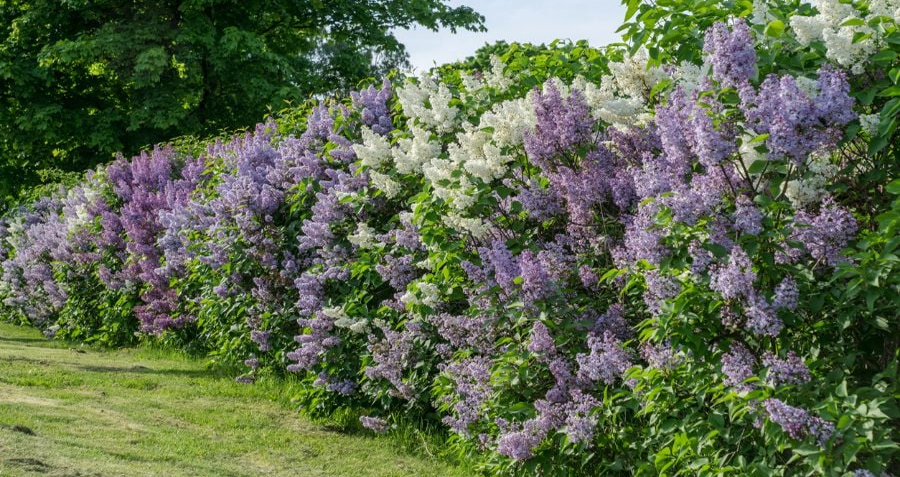
Lilac bushes, known for their bushy and compact form, grow at a moderate pace. They add 8 to 15 inches to their height every year. The steady growth rate enables them to establish a strong presence in the gardens without overpowering the surrounding landscape.
This might also interest you – How long do lilac bushes live.
B. How fast do lilac trees grow?
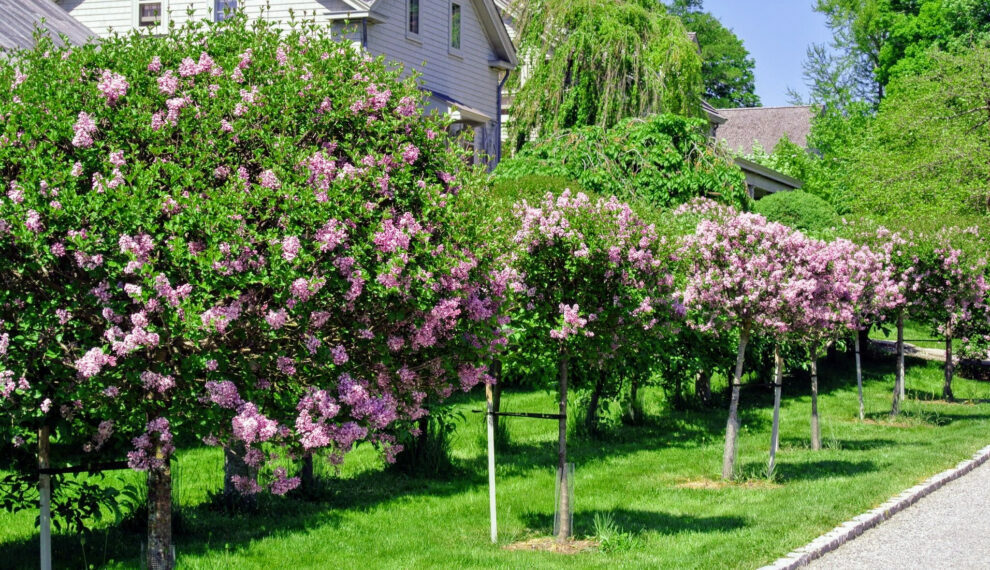
Lilac trees, or the standard lilacs or tree-form lilacs, are trained to have a single trunk with a canopy of branches on the top. They usually grow a little less than lilac bushes and add six to twelve inches to their height in a year.
Thus, bushes’ growth varies from the tree’s pace. And that is why lilac bushes achieve maturity sooner than lilac trees.
How To Make Lilacs Grow Faster?
You must consider several factors and care practices if you are eager to see your lilacs thrive and reach their full potential. By providing lilacs with optimal growing conditions and tending to their needs, you can enable lilacs to develop vigorously and flourish in the garden.
Here are some tips that can help promote faster growth in lilacs:
Right variety selection
Picking the correct variety of lilacs is imperative in promoting faster growth. Different lilac cultivars have varying growth habits, adaptability, and colors. So, when choosing a variety, always account for factors such as the available space, soil type, and climate in your area.
Opt for cultivars known for their adaptability in your area and growth rate. Some varieties, like the common lilac (Syringa vulgaris), are famous for their growth rate. Further, hybrids, like the Miss Kim lilac (Syringa patula Miss Kim), are known for their compact size and faster growth than other lilac varieties.
You can speak to experienced gardeners or consult your local nurseries to identify the varieties with a faster lilac growth rate in available climatic conditions.
Climate and geographical location
The geographical location and climate also determine the lilacs’ growth and development. Lilacs thrive in areas with a temperate climate, where they experience distinct seasons. They cherish moderate summers and cold winters, as this seasonal cycle promotes optimal flowering and growth.
Before planting lilacs, consider the specific climatic conditions in your zone. Ensure that the average winter temperature aligns with the lilac’s cold-hardiness requirements. Some varieties can survive warmer temperatures, like the California Rose lilac (Syringa vulgaris California Rose).
Those residing in a region with a different climate than what’s ideal for lilacs can still consider growing them by picking suitable varieties and offering additional care.
You can create microclimates via proper mulching, positioning, and watering. These mitigate unfavorable conditions and amplify lilac growth.
Soil conditions and fertility
Fertility and soil conditions also have a crucial role in promoting faster growth in lilacs. The lilacs thrive in well-draining soil rich in organic matter. So, before planting lilacs assess the soil’s composition and make necessary amends.
You can improve drainage by incorporating organic matter like well-rotted manure or compost into the planting area. It helps avoid waterlogged soil that hinders overall growth and root development.
Lilacs thrive in slightly acidic to neutral soil. So, if your soil is too acidic, you can add lime to increase the pH. On the contrary, if it is too alkaline, amends like peat moss or sulfur helps lower the pH.
Regular feeding is also crucial for optimal growth. So, add a slow-release balanced plant food into the soil before planting. Further, you must apply a balanced plant food annually in early spring to provide plants with vital nutrients for robust growth and to facilitate blooms.
Sunlight and temperature requirements
Suitable temperature and adequate sunlight are other vital conditions for promoting lilac growth. Lilacs cherish the full sun. They need at least six hours of direct sun daily. So, grow them in an area with ample sun to stimulate healthy growth and abundant flowering.
Lilacs also have specific temperature requirements. They thrive in regions with cold winters, as a period of dormancy is necessary for their vigorous growth in the spring.
Further, lilacs cherish moderate summer temperatures instead of extreme heat, as the excessive heat stresses the plants.
So, account for temperature patterns and sunlight in your region when growing lilacs. Ensure they get sufficient sunlight and the temperature ranges align with their preferences.
By meeting these requirements, you can build a conducive environment that facilitates faster growth and supports their overall health.
Pruning and maintenance practices
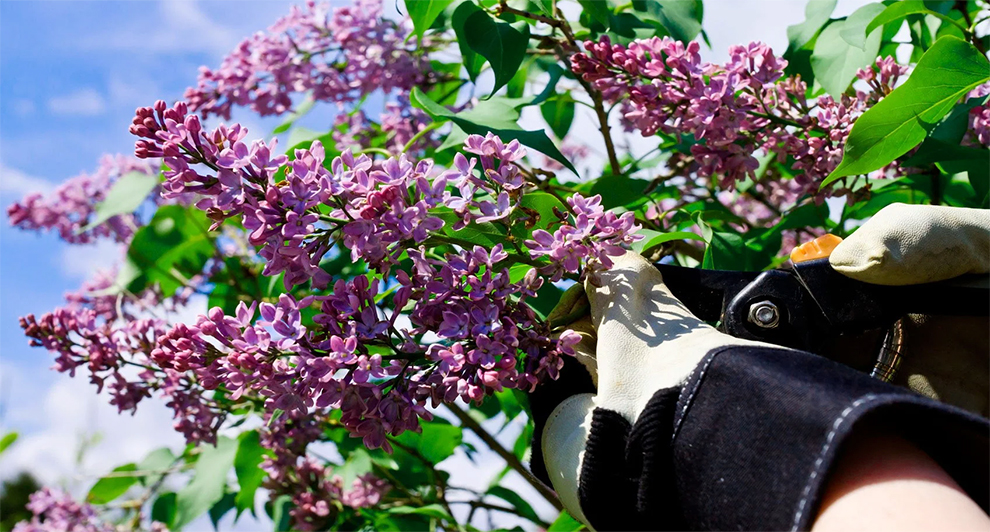
Maintenance and pruning practices facilitate faster lilac tree growth rate and health. Regular pruning stimulates new growth, strengthens the plant’s structure and shape, and betters airflow. You can prune immediately after flowering.
So, remove spent flowers and cut back any dead, damaged, or weak branches. It triggers new shoot growth and amplifies the plant’s vigor. Do not prune in the fall or late summer. It may remove the next season’s flower buds.
Further, proper maintenance practices, such as applying mulch, removing weeds, and regular use of fertilizers for lilac, contributes to faster growth.
Weed control lowers competition for resources, whereas mulch helps retain soil moisture and regulates temperature. A slow-release and balanced plant food in early spring provides vital nutrients for robust growth.
Watering needs
Proper watering practices are imperative for faster growth in lilacs. Though lilacs are drought-tolerant once established, they still seek adequate and regular moisture, typically during the early growth stages.
So water deeply and thoroughly to ensure the water reaches the root zone. Aim for deep and slow watering over frequent shallow watering to encourage a robust root system.
In the dry periods, offer supplemental irrigation to keep the soil evenly moist but not water-logged. Apply a thick mulch layer around the lilac’s base helps regulate soil temperature and retain moisture.
But, be cautious and do not overwater, as too much watering results in root rot and other issues. Monitor the soil levels and adjust watering accordingly based on the lilacs’ specific needs and prevailing weather conditions.
With a proper watering regimen, lilacs get the necessary moisture for healthy growth, enabling them to flourish and reach their full potential.
Pest and diseases
Lastly, disease and pest management is crucial in determining lilac bush growth rate. Some pests that affect the lilacs are lilac borers, powdery mildew, and aphids. With regular foliage and stem inspection, you can detect any infestation signs.
Using horticultural oils or insecticidal soaps helps control aphids, whereas fungicidal treatments and sanitation addresses powdery mildew.
Preventing borers goes a long way into maintaining lilac’s overall health, avoiding mechanical injuries to the trunk, and promptly destroying and removing infested branches.
